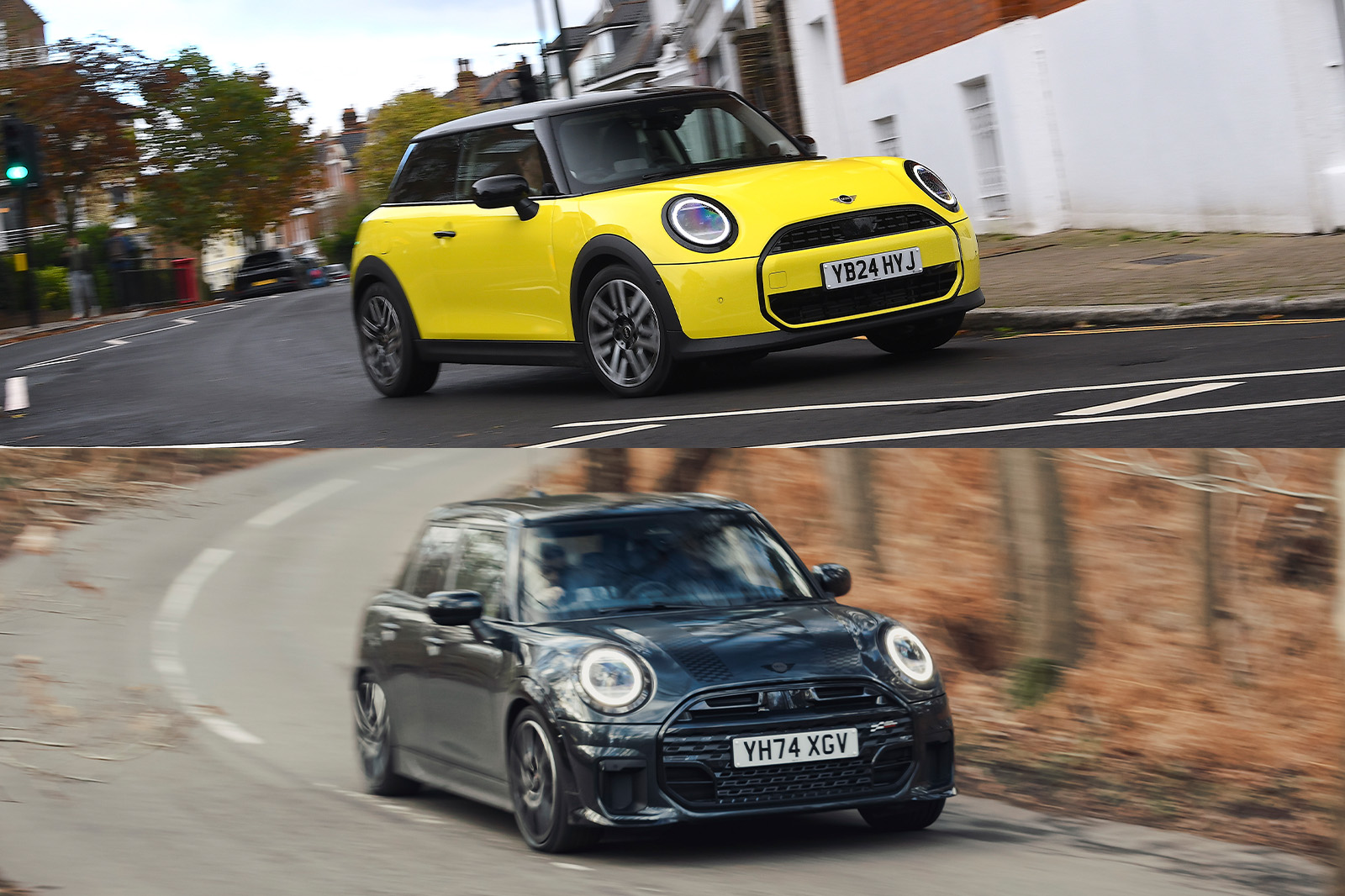Mini Cooper C and Cooper S long-term test
Close Felix Page 4 May 2025 Much has been made of whether the new Mini Cooper really merits being described as such, because if you peel back the subtly updated bodywork, rip out the funky knitted dashboard and disconnect the massive circular touchscreen, you will be left with fundamentally the same chassis and body-in-white as those used by its predecessor, which went on sale way back in 2013. While the electric Cooper is all-new, now built in China atop a platform co-engineered with Great Wall Motor, the latest version of the ICE hatch – still built in Oxford atop BMW’s front-driven FAAR platform – is more like a heavy facelift. Unusually, despite their wildly different origins and underpinnings, the two cars look broadly identical, save for the EV’s flush-fitted door handles. That’s that cleared up, then. Happily, the line-up of ICE models doesn’t need too much further explanation: you can still have three or five doors, a 1.5-litre turbo triple in the C or a 2.0-litre turbo four in the S or John Cooper Works, and things are made simpler still by the fact that diesel engines and manual gearboxes have fallen by the wayside across the board, for better or worse. You needn’t even spend much time on the configurator any more. Pick from one of three trim packs (Sport, Classic or Exclusive), choose your paint and wheels, apply the ‘level’ of equipment you want (1, 2 or 3) and you’re there. Related Mini Cooper reviews Our three-door C is an entry-level Classic but with the Level 2 pack, optional Sunnyside Yellow paint and jazzy 17in alloys, so it looks suitably high-spec without leaning towards the disingenuous connotations of sporting prowess implied by the dressed-up Sport. Latest Reviews Toyota Prius 8 Toyota Prius View all car reviews Read our review Car review Mini Cooper C reviewPetrol hatchback and convertible promise driver fun at a competitive priceRead our review Back to top It has adaptive LED headlights, keyless entry, heated front seats, a wireless phone charger and a panoramic sunroof – and I’ve yet to find it wanting for anything else. I’m glad, even, to go without the adaptive cruise control and in-car camera you get at Level 3. Coincidentally, the Cooper displaces another retro-styled, fashion-focused, bright-yellow small hatch from my parking space. Although I will miss my old Abarth 500e’s more overt sporting tendencies and lairier styling, I won’t miss its meagre 140-mile real-world range and 30-minute charging times. By contrast, the Mini’s abstemious engine and chunky 44-litre fuel tank have essentially unshackled me, giving me the freedom to decide on a far-flung destination at short notice and tear out of the confines of the M25 with nary a consideration for how many stops I will need to make, or how many Netflix dramas I will need to download to keep me occupied at the Banbury Instavolt chargers. I won’t miss them over the next few months, either, come to think of it. It’s underrated, that sense of liberation – especially as electrification and inflation conspire to make it ever more difficult to attain. Back to top The Cooper is one of only a few petrol-powered superminis left on sale, with previous segment stalwarts having bitten the dust as their makers ramp up the focus on larger, more profitable (and usually electric) alternatives. But even then, it’s hardly the people’s choice: with its starting price being £23,150, you would have to overlook some much more capacious crossovers – and an increasingly competitive field of EV alternatives – to plump for the Cooper in this day and age. It’s hardly the de facto Ford Fiesta replacement that many are calling out for. In fact, it seems to occupy a relatively precarious position in today’s market. If people want small, they tend to also want cheap, and by the same token, if people want premium, they tend to go big. So today’s Cooper won’t have success handed to it on a plate. Especially when you consider the relative simplicity of its powertrain, the spatial limitations of its interior and some of the more controversial elements of its wide-reaching redesign (what was wrong with the traditional gauge cluster?). But since its BMW-backed rebirth a quarter of a century ago (yep, seriously), the Mini name has carried rather more stylish and bourgeois connotations than did its 1959 namesake, and even more so in 2024. It’s probably a car you buy with your heart, rather than your head, so we must consider it in a different light to the Renault Clios and Vauxhall Corsas of this world. Back to top Not to pre-empt the ‘goodbye’ report that I will be writing in a few months’ time, but I might as well reveal that I’ve already grown quite fond of YB24 HYJ. It’s agreeably peppy and easily manoeuvrable around my tight south

This is another headline indexed and brought to you by the AUTOMUNDO website.
